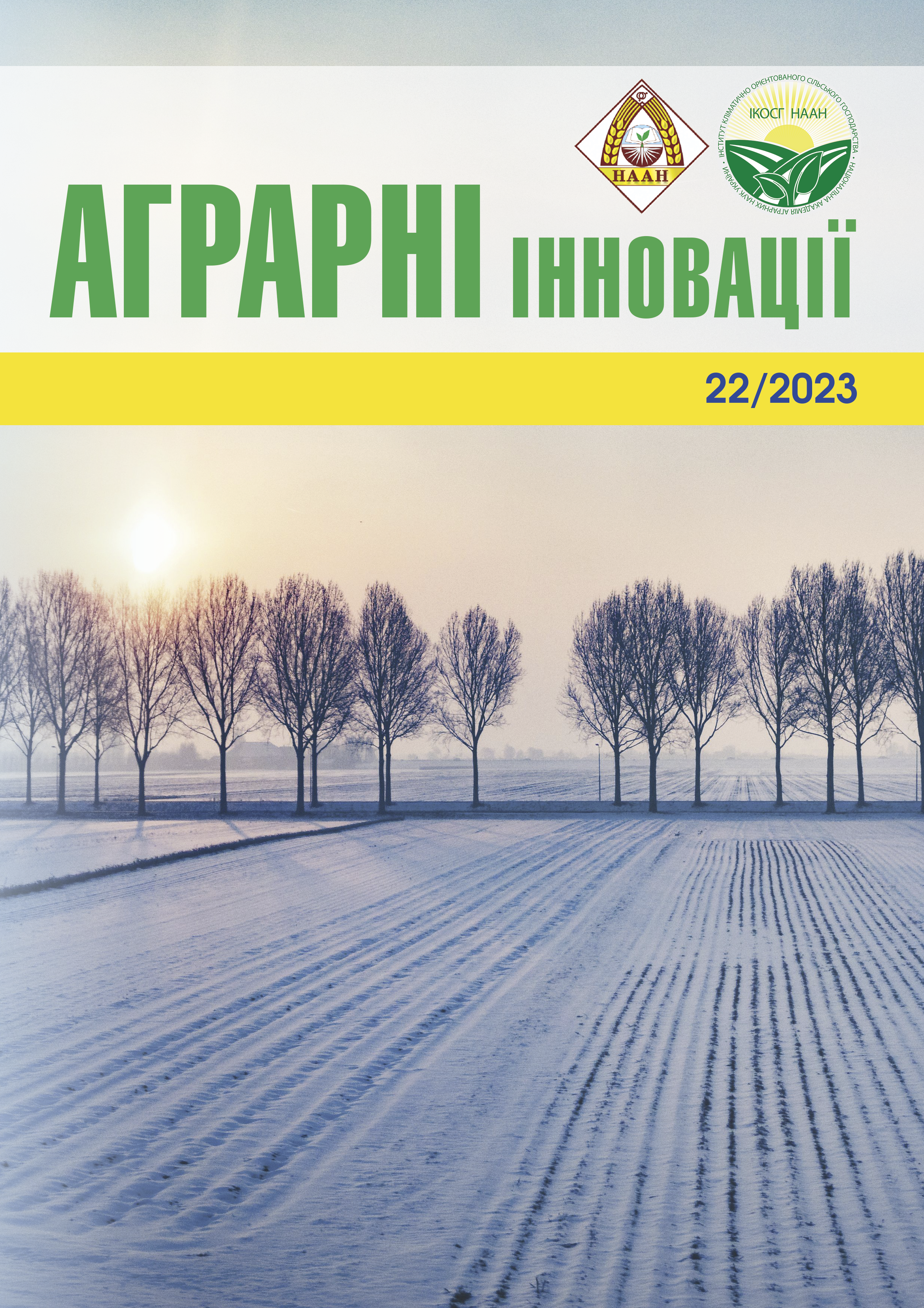DEPRESSION EFFECTS IN NEW WINTER WHEAT VARIETIES UNDER THE INFLUENCE OF A CHEMICAL SUPERMUTAGEN
Abstract
Breeding improvement of valuable genotypes of winter wheat, creation of new cultural forms based on wild material, increase of cultural biodiversity, acceleration of improvement of already existing and introduction of new traits are the basis of the problem of using factors with a low harmful effect, which can lead to complex microchanges. Purpose. The research is aimed at studying the effect (mutagenic depression) of a chemical supermutagen at the level of individual plants in the first generation according to the indicators of ontogenesis, passage of phenophases, pollen viability, yield structure. Methods. The seeds of winter wheat varieties Farrell, NE 12443, Ronin, Sailor were treated with water solution of DAB (1,4-bisdiazoacetylbutane) in concentrations of 0.1%, 0.2%, 0.3%. For each treatment 1000 grains of winter wheat were taken. Exposure to mutagen was 24 hours. The experiment was sown by hand, in the first generation germination and survival after the winter period were monitored in separate variants. The level of sterility was determined by staining pollen samples with acetocarmine and the yield structure was analyzed. Results. The total amount of researched material was 16,000 plants according to all variants, of which, after overwintering analysis, the volume of the mutant population was 14,341 plants. Analysis in the factor space of the influence of individual parameters as classification functions showed that the entire material can be divided into three main groups according to the nature of the action. The group in the absence of mutagenic influence and the effect of DAB 0.3% were clearly and reliably differentiated by centroid distances. There was no statistically significant difference in the effects of mutagenic depression between the DAB 0.1% and DAB 0.2% groups. It was established that parameters such as germination and survival of plants, the level of sterility in samples, the weight of grain from the main ear and MTZ are model for the effects of the activity of DAB as a mutagen when the action is manifested in the first generation with a reliable level of reliability. Other indicators are not essential for reliable monitoring of depression. Findings. Depressive effects according to the studied signs in the variants of the studies, even at the highest concentration, did not reach the values of LD50 or RD50, that is, according to the effect of the concentration, they were moderate. According to the classification analysis, it is not appropriate to use DAB 0.1%. This mutagen is characterized by significant genotype-mutagen interaction. In contrast to the epimutagenic effect, long-term death is less important, mainly the depressive effect of DAB is expressed in lower germination. The variety Sailor stood out for its specific genotype-mutagenic interaction and susceptibility.
References
2. Ahumada-Flores S., Pando L., Cota F., de la Cruz T., Sarsu F., de los Santos V. Technical note: gamma irradiation induces changes of phenotypic and agronomic traits in wheat (Triticum turgidum ssp durum). Applied Radiation and Isotopes. 2021. Vol. 167, 109490. URL: https://doi.org/10.1016/j.apradiso.2020.109490 (дата звернення: 23.01.2024).
3. Ariraman M., Dhanavel D., Seetharaman N., Murugan S., Ramkumar R. Gamma radiation influences on growth, biochemical and yield characters of Cajanus
Cajan (L.) MILLSP. Journal of Plant Stress Physiology. 2018. Vol. 4. Р. 38–40.
4. Beiko V., Nazarenko M. Early depressive effects of epimutagen in the first generation of winter wheat varieties. Agrology. 2022. Vol. 5, № 2. Р43–48.
5. Chakraborty S., Mahapatra S., Hooi A., Ali N., Satdive R. Determination of Median Lethal (LD50) and Growth Reduction (GR50) Dose of Gamma Irradiation
for Induced Mutation in Wheat. Brazilian Archives of Biology and Technology. 2023. Vol. 66, e23220294. URL: https://doi.org/10.1590/1678-4324-2023220294
(дата звернення: 23.01.2024).
6. Mangi N., Baloch A., Khaskheli N., Ali M., Afzal W. Multivariate Analysis for Evaluation of Mutant Bread Wheat Lines Using Metric Traits. Integrative Plant
Sciences. 2021 Vol.1, № 1. Р. 29–34.
7. Nazarenko M., Beiko V., Bondarenko M. Induced mutations of winter wheat caused by gamma-rays fixed on plant height and stem structure. Agriculture and Forestry. 2019. Vol. 65, № 3. Р.75–83.
8. Nazarenko M, Semenchenko O., Izhboldin O., Hladkikh Y. French winter wheat varieties under ukrainian north steppe condition. Agriculture and Forestry. 2021. Vol. 67, № 2. Р. 89–102.
9. le Roux M., Burger N., Vlok M., Kunert K., Cullis C., Botha A. EMS Derived Wheat Mutant BIG8-1 (Triticum aestivum L.) – A New Drought Tolerant Mutant Wheat Line. International Journal of Molecular Sciences. 2021. Vol. 22, 5314. URL: https://doi.org/10.3390/ijms22105314 (дата звернення: 23.01.2024)
10. Shabani M., Alemzadeh A., Nakhoda B., Razi H., Houshmandpanah Z., Hildebrand D. Optimized gamma radiation produces physio-logical and morphological changes that improve seed yield in wheat. Physiology and Molecular Biology of Plants. 2022. Vol. 28, № 8. Р. 1571–1586.






